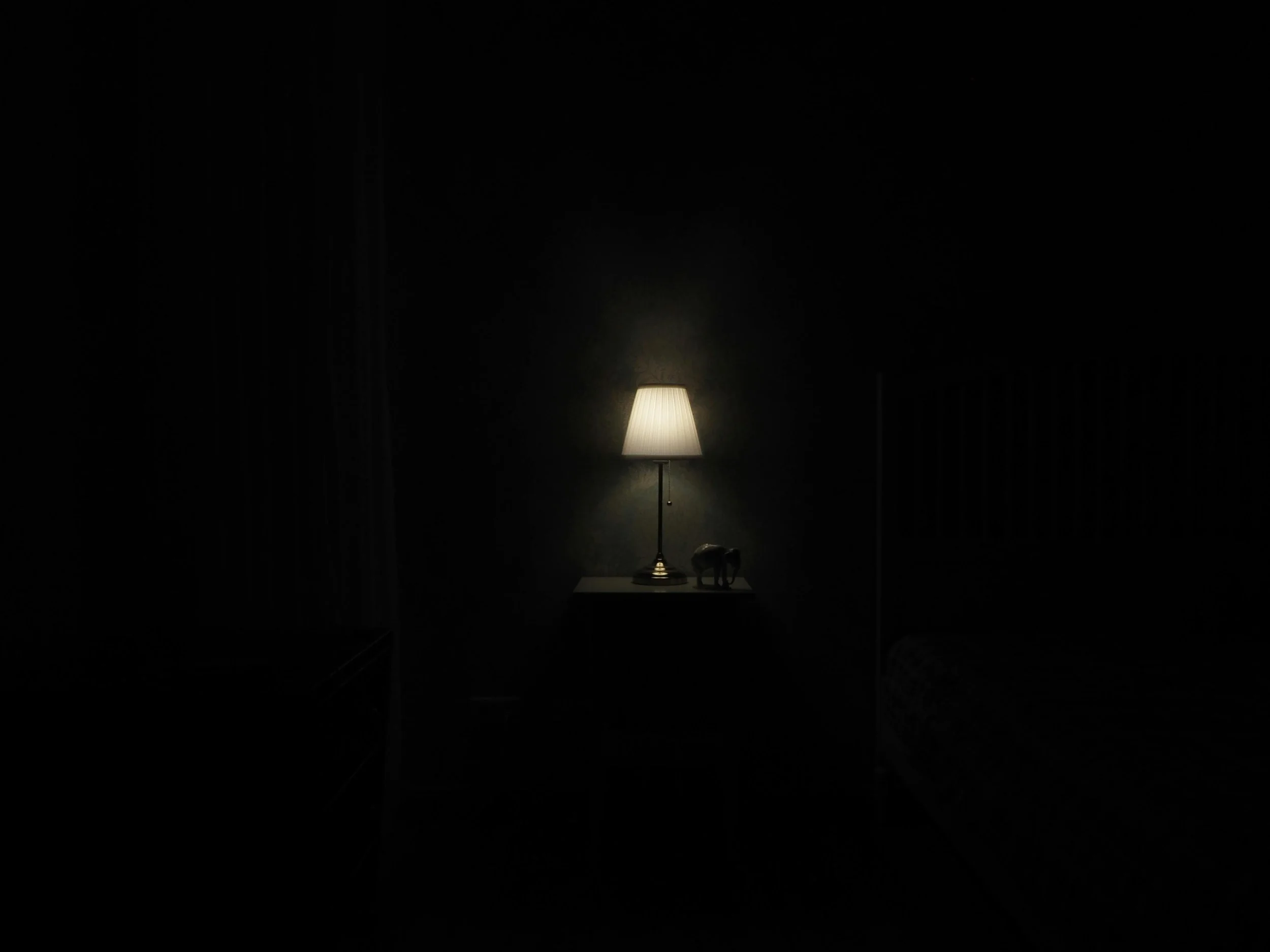Most People Are Numbing Out. You’re Learning to Stay Present.
“It takes a quiet moment to remember you’re still here.”
TL;DR — The Heart of It
Most people are slipping into numbness because their nervous systems are overwhelmed, not because they’re weak.
If you’re still noticing your inner world instead of disconnecting from it, you’re not “too sensitive.” You’re awake.
Staying present in a numbing culture is lonely sometimes, but it’s a sign of resilience, not fragility.
Here in Santa Fe, a lot of people are feeling strangely disconnected lately. It shows up as a mind that’s wide awake while the body feels a few steps behind. A lot of people are running on fumes right now. Not because something is wrong with them, but because the world has been sitting in a state of sustained overwhelm for too long.
There’s global conflict in the background, political chaos front and center, a shaky economy, rising costs, job instability, and the holidays approaching — which, for many, bring heaviness rather than warmth. Add the constant noise of social media on top of that — the shouting, the outrage cycles, the endless stimulation — and you end up with a collective nervous system struggling to keep up.
For many people, this turns into numbness.
They don’t always recognize it as numbness. They just feel off. Tired. Scattered. Blank in a way they can’t explain. But numbness isn’t a mindset or an attitude. It’s not even an emotion.
It’s a physiological state.
It’s the body’s way of saying, I can’t process this much anymore.
You can feel this even more in slower desert places. Somatic therapy in Santa Fe often begins with people realizing how long their body has been in shutdown.
And here’s where the experience begins to diverge.
Not everyone disappears into that shutdown. Some people notice the numbness as it arrives. They feel the fog, but they don’t get swallowed by it. They pause instead of dropping into autopilot. They stay connected enough to sense what’s happening inside, even when it’s uncomfortable.
If you’re reading this, you’re probably one of those people.
And that makes your experience different. Not better, not special, simply different…in a world that’s drifting toward emotional absence.
This article is for you.
Why Everything Feels So Numb Right Now
When the nervous system is exposed to sustained stress, it eventually stops trying to stay alert. It shifts from “fight or flight” to freeze — a biological low-power mode. Research on chronic stress patterns shows this again and again: when overwhelm becomes continual, the body protects itself by going flat, not by going faster.
This state can look like:
low motivation
heaviness
shallow breathing
trouble focusing
emotional detachment
an internal “fog,” even if your mind seems fine
This isn’t depression for everyone (though the two can overlap). It’s biological conservation.
And the world is full of reasons to collapse inward right now: too much information, too much noise, too much pressure, too many things competing for emotional bandwidth. People scroll not because they’re weak, but because their systems are overwhelmed and looking for the quickest exit from intensity.
Numbness becomes the exit.
But that isn’t the whole story.
What Numbing Out Actually Looks Like in the Body
Most people describe numbness as “not feeling anything,” but that’s just the surface. Underneath, the body is running one of a few common patterns:
1. Shutdown (Dorsal Vagal Freeze)
This is the “I’m here, but not really” state.
You’re technically functioning, but you feel disconnected from your emotional center. This shows up as:
reduced expression
difficulty accessing emotion
a sense of heaviness
internal blankness
A lot of people are living in this state right now without realizing it.
2. Sympathetic Overdrive (Wired but Drained)
This one is tricky because it looks productive.
You’re getting things done, but internally you’re buzzing. You might feel:
tightly wound
restless
reactive
overstimulated
unable to settle
This is numbness disguised as functionality.
3. Micro-Dissociation from Overstimulation
This is the modern version:
not dramatic, just constant.
zoning out mid-scroll
losing track of time
floating through tasks
emotional “flattening”
feeling distant from yourself
This happens because the body is simply receiving more stimulus than it can meaningfully process.
None of this makes someone broken.
It makes them overwhelmed.
Why So Many People Choose Distraction Over Presence
Most people aren’t intentionally avoiding themselves…their biology is. When the body believes presence will be too much, it takes the fastest exit from intensity.
In today’s world, that exit is everywhere:
endless feeds
news alerts
short-form video overload
constant opinions
constant stimulation
Avoidance is rewarded because it keeps people running. Not regulated, not grounded, but running.
Presence requires capacity.
Numbing requires nothing.
Which is why numbing has become the default for so many.
But some people, for reasons shaped by their history, nervous system wiring, and lived experience, don’t go fully offline. They feel the pressure, but they stay connected enough to notice.
And that noticing changes the entire trajectory.
“The body reaches for whatever feels easier than feeling.”
Reasons You Haven’t Collapsed Into Numbness
People who stay present during overwhelming times aren’t more disciplined or morally superior. Their bodies simply adapted differently.
Here’s what’s actually happening:
1. You feel more, not less
This isn’t fragility.
It’s sensitivity with awareness behind it.
Your internal signals don’t shut down easily, even when things are intense. You still notice when something is off. You still sense the subtler emotional shifts others overlook.
2. You stay embodied instead of escaping
You return to your breath, your body, your physical cues.
Not perfectly — just consistently enough.
This is a form of nervous system resilience, not emotional indulgence.
3. You seek meaning over sedation
You don’t want more noise.
You want clarity, depth, honesty.
This instinct doesn’t come from “being different.”
It comes from a body that never fully disconnected from itself.
4. You recognize when shutdown is creeping in
And instead of disappearing into it, you pause.
That pause, that one moment of awareness, is the difference between collapse and regulation.
You’re not superhuman.
You’re just awake.
In a numbing culture, that stands out.
Why You Feel Different From the People Around You
Staying present in a world that’s numbing out comes with very real friction.
You might feel:
more sensitive
more aware
more attuned
more affected by subtle shifts
more emotionally conscious
These aren’t flaws. They’re signs your nervous system hasn’t shut down.
But they often make you feel out of step with people who are running on autopilot.
You feel “ahead” internally but behind socially
Because most people are operating from a more protected state, you end up feeling like you’re living one layer deeper. You’re noticing things they’re not. You’re feeling more than they are. You’re awake when they’re drifting.
This creates a mismatch.
A quiet one, but a real one.
You pick up emotional cues others filter out
You sense tension in a room.
You feel when someone is checked out.
You notice relational distance long before it’s spoken.
This is not “overthinking.”
This is interoceptive accuracy; and it often increases with real healing.
You’re drawn to slowness and depth
Instead of noise, you seek grounding:
rituals, stillness, sensory moments that reconnect you to yourself.
This isn’t aesthetic.
It’s regulation.
You’re doing something most people don’t have the bandwidth to do right now:
you’re staying here.
I see this in my own community too. On the surface Santa Fe wellness looks calm, but many people quietly struggle with a drift toward numbness.
“You notice the world speeding past because you stopped running.”
Is Your Sensitivity Actually Strength? (Short answer: yes)
Sensitivity is often framed as fragility, but physiologically, the opposite is true. The ability to feel internal cues early — before they become crises — is one of the strongest markers of resilience.
Your system isn’t overwhelmed by sensitivity.
It’s supported by it.
This looks like:
catching emotional signals early
grounding before shutdown
staying responsive instead of reactive
staying connected even when uncomfortable
This isn’t “being sensitive.”
It’s embodied intelligence.
And embodied intelligence is what keeps you from disappearing into numbness.
The Quiet Cost of Staying Awake
Staying present is meaningful, but it isn’t easy. It comes with its own challenges:
1. It can feel lonely
You’re operating with more awareness than the people around you. That gap can feel isolating.
2. Other people feel “far away”
Not because they don’t care — but because they don’t have the bandwidth for deeper connection right now.
3. You see things others overlook
The emotional undercurrents, the exhaustion, the avoidance — you sense it all.
4. You may get labeled as “too sensitive” or “too intense”
Simply because you’re present, and presence stands out.
5. You might be tempted to numb yourself just to blend in
But your system doesn’t stay numb for long.
It pulls you back, because presence is your baseline.
These challenges don’t mean you’re doing it wrong.
They mean you’re not abandoning yourself.
Why People Like You Become the “Lighthouses”
Even if you don’t intend to be, your presence affects people.
Not because you’re trying to regulate them.
Not because you’re performing calmness.
But because a regulated system changes the environment around it.
People feel steadier around someone who is present.
They breathe differently.
They soften.
They slow down.
They feel more real.
This is what embodied people do without realizing it:
they create stability simply by being in their own body.
It’s not spiritual grandiosity.
It’s physiology.
“People steady themselves around someone who can stay.”
What Actually Helps You Stay Present (Instead of Slipping Into Numbness)
You don’t need dramatic rituals or hour-long practices. Presence is built through small, consistent cues that remind your body to stay here.
1. Simple sensory rituals
Warmth in your hands
A lit candle
Texture
Pressure
A grounding touch to your chest
These reopen interoceptive pathways.
2. Slow physical practices
Jaw release
Neck massage
Gentle movement
Weighted blankets
Warm compresses
Anything that pulls sensation forward.
3. Reducing input
Lowering volume
Stepping away from screens
Turning off overhead lights
Letting silence exist
Capacity grows when noise decreases.
4. One slow breath
Not dramatic breathwork. Just an exhale that’s slightly longer than the inhale.
This signals safety faster than anything else.
5. Returning to grounding spaces
Corners of your home
Your car
Your bed
Your studio
Warm light
Soft textures
Your body remembers places where it felt regulated.
These aren’t hacks.
They’re openings. Small reminders that your system doesn’t need to shut down.
What This Means for Your Healing Going Forward
Your healing is not about becoming someone else.
It’s about learning to inhabit yourself more fully.
Over time, this means:
you tolerate closeness without collapsing
you choose alignment over distraction
you move more intentionally
you stop abandoning yourself in subtle ways
you build emotional capacity instead of numbing it out
Presence becomes your baseline, not because you force it, but because you return to it.
You’re Not Out of Place. You’re Early.
If you feel different from the people around you. If you feel more aware, more sensitive, more connected. It’s not because something is wrong with you.
You’re not too much.
You’re not out of sync.
You’re not behind.
You’re simply awake in a moment when many people are shutting down.
And even though that path can feel lonely sometimes, it’s also the path that leads you back to yourself.
You’re not disappearing into numbness.
You’re learning to stay present.
And that difference matters. Not because it makes you better, but because it keeps you connected to your life, your body, and who you’re becoming next.
🌙 If you want support staying connected to yourself
I’m opening a small number of December sessions in Santa Fe.
You can join the waitlist for first access.




